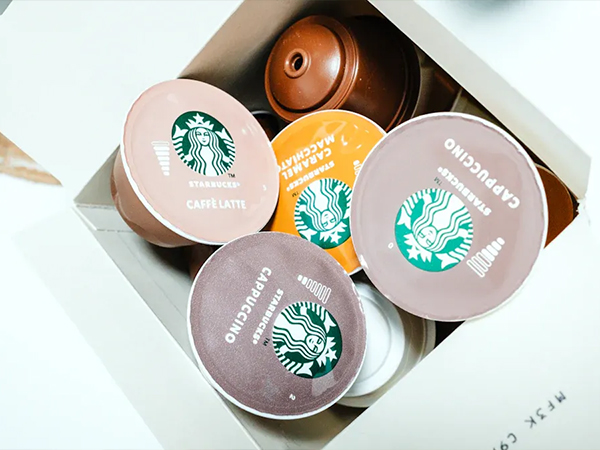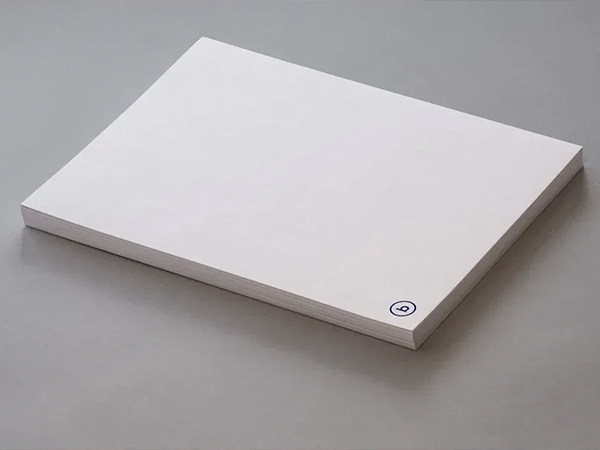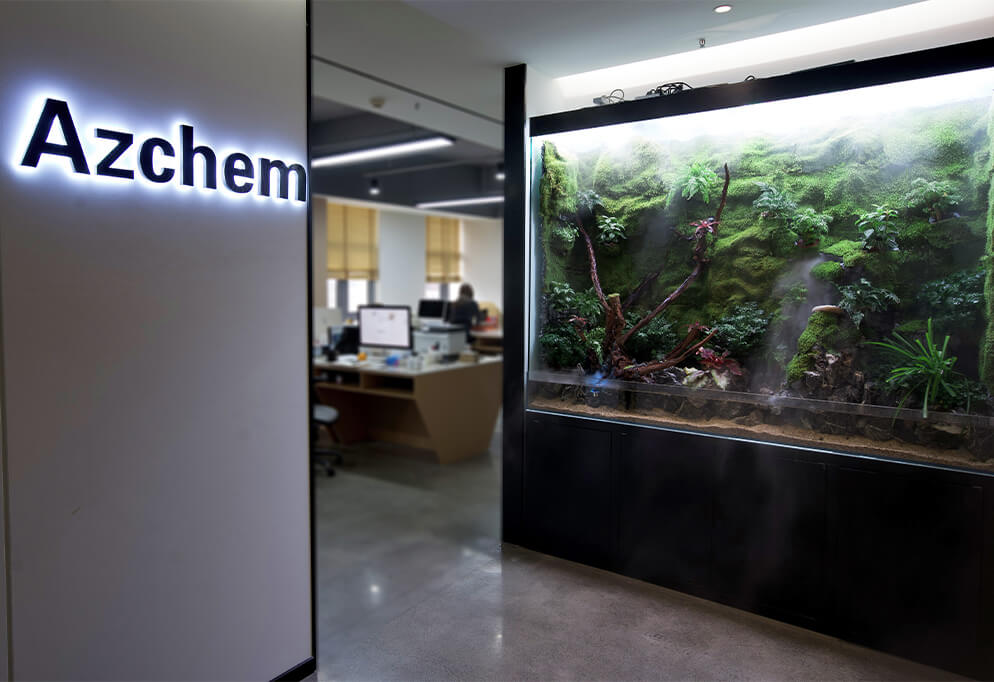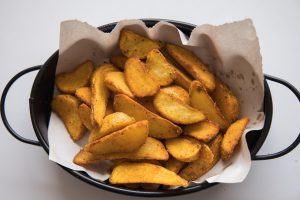
You have likely experienced greasy food soaking through a paper bag, leaving stains and weakening the packaging. Oil-resistant coatings for paper packaging solve this problem by forming a barrier that blocks oil, grease, moisture, and oxygen. These advanced coatings use emulsion polymers to create strong, flexible films that protect food from contamination and maintain packaging strength. Manufacturers design these coatings to meet food safety regulations, enhance shelf life, and ensure packaging stays intact from production to consumption.
Key Takeaways
- Oil-resistant coatings create a strong barrier on paper to block oil, grease, and moisture, keeping packaging clean and food safe.
- These coatings improve food safety by preventing harmful chemicals from migrating into food, especially fatty items.
- Common coatings include polyethylene, fluorocarbons, biopolymers, and sustainable options like waste cooking oil-based coatings.
- Biopolymer and sustainable coatings offer good oil resistance while supporting compostability and reducing environmental impact.
- Standard tests like the Kit Test and Cobb Test measure how well coatings resist oil and water, ensuring reliable packaging performance.
- Oil-resistant coatings help maintain packaging strength and appearance, preventing leaks and extending food shelf life.
- Regulations increasingly restrict harmful chemicals like PFAS, pushing the industry toward safer, eco-friendly coating alternatives.
- Choosing oil-resistant and sustainable coatings enhances brand reputation by combining product quality with environmental responsibility.
What Are Oil-Resistant Coatings

Definition
You encounter oil-resistant coatings for paper packaging in many everyday products. These coatings consist of specialized materials applied to the surface of paper to create a barrier against oil, grease, and moisture. Manufacturers use water-based emulsion polymers, such as styrene-butadiene and styrene-acrylic, to form thin, dense films on the paper. These films fill the tiny pores in the paper, making it difficult for oil and grease to pass through. By lowering the surface energy of the paper, these coatings create hydrophobic (water-repellent) and oleophobic (oil-repellent) properties. This means oil and grease cannot easily stick to or penetrate the paper fibers.
Note: The scientific principle behind these coatings relies on modifying both the surface chemistry and the physical structure of the paper. This dual approach creates a strong barrier that repels oil and grease molecules, keeping your packaging clean and intact.
Purpose
You need oil-resistant coatings for paper packaging to solve several challenges in food and product packaging. The main goal is to prevent oil and grease from soaking through the paper, which can weaken the packaging and cause leaks or stains. These coatings protect the contents from contamination and help maintain the appearance and strength of the packaging. When you use packaging with these coatings, you ensure that food stays fresh and safe, and the packaging remains sturdy during handling and transport.
- You benefit from:
- Improved food safety by blocking oil and grease.
- Extended shelf life for packaged goods.
- Enhanced packaging durability and appearance.
Applications
You find oil-resistant coatings for paper packaging in a wide range of industries. Food service businesses use them for burger wrappers, sandwich bags, bakery boxes, and takeout containers. Grocery stores rely on these coatings for deli papers, pastry bags, and meat packaging. Fast-food chains and restaurants choose these coatings to keep their products fresh and prevent oil stains on packaging.
| Application Area | Common Products | Benefit |
|---|---|---|
|
Food Service |
Burger wrappers, sandwich bags |
Prevents grease stains |
|
Grocery & Retail |
Deli papers, pastry bags, meat trays |
Maintains product freshness |
|
Takeout & Delivery |
Pizza boxes, fried food containers |
Keeps packaging strong & clean |
Composite coatings, which combine materials like polyvinyl alcohol, cellulose nanofibers, bamboo powder, and alkyl ketene dimer, further enhance oil and water resistance. These advanced coatings increase the water contact angle and kit number, showing strong repellency and mechanical strength. You can trust these solutions to keep your food safe and your packaging looking professional.
Why Paper Packaging Needs Oil Resistance
Oil and Grease Penetration
When you use paper packaging for food, oil and grease can quickly become a problem. Without a proper barrier, these substances seep through the paper, causing stains, weakening the structure, and making the packaging unsightly. You may notice that regular paper cannot stop oil from spreading, especially with fried or fatty foods. This issue goes beyond appearance. Oil and grease can carry contaminants from recycled paper or printing inks directly into your food.
- Paper packaging without oil-resistant coatings faces several challenges:
- It struggles to protect against grease and moisture, which are critical for food safety.
- Traditional petroleum-based plastics offer better barriers but raise environmental and health concerns.
- Biobased polymers, while safer for the environment, often lack the strength to block oil and grease effectively.
- New technologies like multilayer nanocomposite coatings show promise but still need further development for widespread use.
You need oil-resistant coatings to ensure that your packaging stands up to the demands of modern food service and retail.
Food Safety
Oil and grease penetration does not just affect the look of your packaging. It can also threaten the safety of the food inside. Harmful chemicals from recycled paper, inks, or adhesives can migrate into your food, especially when oil acts as a carrier. This risk increases with fatty foods, which absorb more contaminants.
| Chemical/Substance | Source/Origin | Health Risks/Effects | Migration Behavior/Notes |
|---|---|---|---|
|
Mineral oils (hydrocarbons n-C20 to n-C28) |
Recycled paper and printed inks |
Potential carcinogenicity; regulated intake limits |
Migrate into food, especially fatty foods; migration correlates with fat content |
|
Diisobutyl phthalate, Di-n-butyl phthalate |
Coated paper liners in recycled paperboard |
Endocrine disruption, exceed safety limits |
Found in infant foods; poor barrier properties allow migration |
|
Polycyclic aromatic hydrocarbons |
Carbon black in newspaper ink |
Carcinogenic (lung cancer) |
Adsorbed on carbon black; linked to cancer in printing workers |
|
Benzophenone derivatives |
Printed paper and paperboard |
Endocrine disruption; found in various food items |
Highest migration in high-fat foods like chocolate, cakes, bread, and rice |
Note: Oil-resistant coatings help prevent these chemicals from reaching your food, protecting your health and ensuring compliance with food safety standards.
Packaging Integrity
You rely on packaging to keep food fresh, safe, and appealing. When oil and grease penetrate paper, the packaging loses strength and can break apart during handling or transport. This failure risks spills, contamination, and product loss. Oil-proof coatings maintain the durability of your packaging, even in high-temperature environments like ovens or microwaves.
- Oil-resistant packaging:
- Preserves food quality and taste by blocking oil and grease.
- Maintains structural integrity, reducing the risk of leaks and mess.
- Meets FDA standards for direct food contact, ensuring safety.
- Reduces the need for extra layers of packaging, saving costs and resources.
By choosing oil-resistant coatings, you protect both your food and your brand reputation, delivering a better experience to your customers every time.
Types of Oil-Resistant Coatings for Paper Packaging
Polyethylene (PE, LDPE, HDPE)
You often see polyethylene coatings used in food packaging because they create a strong barrier against moisture and grease. Manufacturers apply PE, LDPE, or HDPE as thin layers on paper to improve its resistance to oil and water. These coatings help keep food fresh and prevent leaks, making them a popular choice for fast food wrappers, bakery bags, and frozen food boxes.
However, you should know that polyethylene comes from petroleum. This means it does not break down easily in the environment. When you use packaging with PE coatings, you may face challenges with recycling and composting. Polyethylene can also contribute to microplastic pollution if not disposed of properly.
Here is a comparison between polyethylene-based and biopolymer coatings:
| Aspect | Polyethylene-based Coatings (PE) | Biopolymer Coatings (e.g., starch, chitosan, PLA, PHA) |
|---|---|---|
|
Oil Resistance |
Good barrier, widely used |
Blends of chitosan and starch provide good oil resistance |
|
Environmental Impact |
Petroleum-based, reduces biodegradability and recyclability; microplastic pollution possible |
Biodegradable, non-toxic, renewable, environmentally friendly |
|
Mechanical Properties |
Improves barrier properties; tensile strength ~36.9 ± 6.3 MPa |
Improves tensile strength better than PE (e.g., 49.56 ± 4.9 MPa with blends) |
|
Enhances water vapor and oxygen barrier |
Also enhances barrier properties, with added sustainability |
You gain reliable oil and moisture resistance with PE coatings, but you may want to consider the environmental trade-offs.
Fluorocarbons and PFAS
Fluorocarbons, including PFAS (per- and polyfluoroalkyl substances), have long been used to make paper packaging highly resistant to oil and grease. You find these coatings in fast food wrappers, microwave popcorn bags, and bakery papers. They work by creating a surface that repels both water and oil, offering excellent performance even with hot or fatty foods.
However, you should be aware that PFAS chemicals have raised health and environmental concerns. These substances do not break down easily and can accumulate in the environment. Many countries now regulate or restrict their use in food packaging. As a result, you see a growing demand for PFAS-free alternatives.
Tip: When you choose packaging, look for PFAS-free options that use safer barrier technologies, such as silicone, clay nanoparticles, or advanced bio-based coatings.
Biopolymer Coatings
Biopolymer coatings represent a new generation of oil-resistant coatings for paper packaging. You benefit from these coatings because they use renewable resources like starch, chitosan, proteins, and plant-based waxes. These materials form a natural barrier against oil and grease, while also supporting compostability and recyclability.
You can find several advantages with biopolymer coatings:
- They are PFAS-free and non-toxic.
- They break down naturally, reducing environmental impact.
- They offer good oil and water resistance, even for demanding food applications.
- They often improve the mechanical strength and flexibility of paper packaging.
Some innovative solutions use cellulose-based films or nanocellulose, which are lightweight, biodegradable, and provide strong barriers against oxygen and moisture. You may also see fire-resistant coatings made from pure cellulose and silica, which add heat resistance without sacrificing sustainability.
- PFAS-free, compostable, or heat-resistant options include:
- Silicone and clay nanoparticle coatings
- Bio-based coatings from starches, proteins, and waxes
- Cellulose-based films and nanocellulose
- Papkot’s recyclable, biodegradable, and fluorine-free coatings
By choosing biopolymer coatings, you support a safer and more sustainable future for food packaging.
WCO-Based and Sustainable Coatings
You see a growing demand for sustainable solutions in the packaging industry. Waste Cooking Oil (WCO)-based coatings represent a new direction for oil-resistant paper packaging. These coatings use recycled cooking oil as a raw material. You help reduce waste and support a circular economy when you choose WCO-based coatings.
WCO-based coatings work by converting used cooking oil into functional polymers. Manufacturers process the oil through chemical reactions, such as epoxidation or polymerization. The result is a coating that forms a strong, flexible barrier on paper. This barrier blocks oil and grease, keeping your packaging clean and your food safe.
You benefit from WCO-based coatings in several ways:
- Sustainability: You use a renewable resource that would otherwise become waste. This reduces environmental impact and supports responsible resource management.
- PFAS-Free: You avoid fluorinated chemicals, which have raised health and environmental concerns.
- Compostability: Many WCO-based coatings break down naturally. You can compost the packaging after use, reducing landfill waste.
- Effective Barrier: You get strong oil and grease resistance, suitable for demanding food applications.
Tip: When you select WCO-based coatings, you support both food safety and environmental goals. These coatings align with global trends toward greener packaging.
You also find other sustainable coatings on the market. Some use plant-based waxes, proteins, or cellulose derivatives. These options offer similar benefits, such as compostability and PFAS-free performance. You can compare the main features of sustainable coatings in the table below:
| Coating Type | Main Ingredient | PFAS-Free | Compostable | Oil Resistance | Source of Raw Material |
|---|---|---|---|---|---|
|
WCO-Based |
Waste cooking oil |
Yes |
Yes |
High |
Recycled food industry oil |
|
Plant-Based Wax |
Soy, carnauba, etc. |
Yes |
Yes |
Moderate |
Renewable plant sources |
|
Protein-Based |
Casein, soy protein |
Yes |
Yes |
Moderate |
Agricultural byproducts |
|
Cellulose-Based |
Nanocellulose |
Yes |
Yes |
High |
Wood pulp, plant fibers |
You play a key role in driving the shift toward sustainable packaging. By choosing WCO-based and other eco-friendly coatings, you help reduce reliance on fossil fuels and minimize environmental harm. You also meet consumer expectations for safe, responsible packaging. Sustainable coatings offer you a practical path to a greener future in food packaging.
How Oil-Resistant Coatings for Paper Packaging Work
Barrier Mechanisms
You rely on oil-resistant coatings for paper packaging to create a physical and chemical shield between food and the paper surface. These coatings block oil, grease, and moisture from seeping through the packaging. The barrier works by filling the microscopic pores in the paper, making it difficult for oil molecules to pass. Some coatings use hydrophobic (water-repellent) and oleophobic (oil-repellent) materials. These materials force oil and water to bead up and roll off the surface instead of soaking in. You see this effect when droplets form on a waxed or coated surface. By preventing oil and grease from penetrating, you keep food fresh and packaging strong.
Film Formation
You benefit from the film formation process, which is central to how these coatings work. Manufacturers apply a thin layer of polymer or biopolymer to the paper. As the coating dries or cures, it forms a continuous film that covers the entire surface. This film acts as a barrier, sealing the paper fibers and blocking oil and moisture. The film must be flexible enough to bend with the paper but strong enough to resist tearing or cracking. You often find that advanced coatings use emulsion polymers, which create dense, uniform films. These films improve both oil resistance and the mechanical strength of the packaging. When you choose packaging with well-formed films, you get reliable protection for greasy or moist foods.
Surface Modification
You can enhance oil resistance even further through surface modification techniques. These methods change the surface chemistry or structure of the paper, making it more difficult for oil and water to stick or penetrate. For example, plasma-induced free radical polymerization grafts hydrophobic polymer chains onto cellulose fibers, increasing the contact angle and boosting hydrophobicity. You also see biodegradable natural materials like zein, starch, or sodium alginate applied using wet-end or surface coating technologies. These materials improve grease resistance and reduce water vapor transmission. Some manufacturers use interpenetrating polymer networks (IPNs), combining hydrophilic and hydrophobic polymers for superior barrier properties. Sodium alginate and alkali-treated starch treatments provide excellent grease resistance as well.
Here is a summary of common surface modification techniques:
| Surface Modification Technique | Description | Effect on Oil Resistance and Hydrophobicity |
|---|---|---|
|
Plasma-induced free radical polymerization |
Grafting hydrophobic polymer chains onto cellulose fibers |
Significantly increased hydrophobicity with high contact angle |
|
Biodegradable natural materials (zein, starch, sodium alginate) |
Applied via wet-end and surface coating technologies |
Improved hydrophobicity, reduced water vapor transmission, enhanced grease resistance |
|
Interpenetrating polymer networks (IPNs) of sodium alginate and poly(dimethyl siloxane) |
Coating paper surface with chemically linked hydrophilic and hydrophobic polymers |
Enhanced barrier properties combining complementary polymer characteristics |
|
Sodium alginate and alkali-treated starch |
Surface treatment |
Provided excellent grease resistant properties |
Tip: By selecting packaging that uses advanced surface modification, you ensure better oil and grease resistance while supporting food safety and packaging durability.
Measuring Effectiveness
Standard Tests
You need reliable methods to evaluate how well oil-resistant coatings perform on paper packaging. Industry professionals use standardized tests to measure both oil and water resistance. The Kit Test, following TAPPI standards (TAPPI T559, TAPPI 454), checks how well the coating blocks grease. In this test, you apply different grades of chemical solutions to the coated paper and observe if oil penetrates. A higher kit rating means better oil repellency. The Cobb Test, standardized by ISO 535, measures how much water the paper absorbs over a set time. This test is essential for packaging with a basis weight over 50 g/m². Both tests help you ensure that your packaging meets the strict requirements for food safety and quality.
Tip: Consistent results in these tests show that your packaging will protect food from grease and moisture during storage and transport.
Performance Metrics
You should focus on several key performance metrics when evaluating oil-resistant coatings for food packaging. These metrics help you compare different coatings and select the best option for your needs. The most important metrics include oil repellency, water resistance, mechanical strength, thermal stability, and environmental impact. Combining hydrophilic and hydrophobic components in a coating often leads to excellent barrier properties.
| Performance Metric | Description | Measurement / Example |
|---|---|---|
|
Kit rating |
Measures oil repellency |
9/12 or 12/12 indicates high resistance |
|
Oil contact angle |
Shows how well the surface repels oil |
61.54° at SA:CMC ratio 2:0 |
|
Cobb value |
Indicates water absorbency (lower is better) |
3.42 g/m² for strong water resistance |
|
Water Vapor Permeability (WVP) |
Measures moisture barrier |
|
|
Oxygen Permeability (OP) |
Measures oxygen barrier |
3.8 × 10⁻¹⁴ kg m m⁻² s⁻¹ Pa⁻¹ |
|
Thermal Resistance |
Withstands heat during use |
Improved over uncoated paper |
|
Mechanical Properties |
Maintains strength and flexibility |
Unaffected or improved |
You can see the improvements in barrier properties with oil-resistant coatings in the chart below:
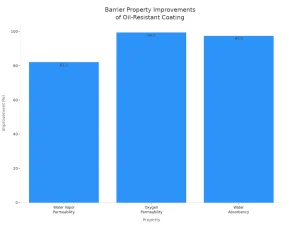
Note: High kit ratings and low Cobb values are critical for food packaging, as they directly relate to oil and water resistance.
Real-World Use
You want your packaging to perform well not just in the lab, but also in real-world conditions. Standard tests and performance metrics help you predict how coatings will behave during actual use. In daily operations, you should look for:
- Consistent oil and water resistance: Your packaging should prevent leaks and stains, even with greasy or moist foods.
- Durability: Coatings must withstand folding, handling, and temperature changes without cracking or peeling.
- Compliance: Packaging should meet food safety regulations and environmental standards.
- Customer satisfaction: Clean, sturdy packaging improves the consumer experience and protects your brand reputation.
By focusing on these factors, you ensure that your oil-resistant paper packaging delivers reliable protection from production to consumption.
Safety and Environmental Impact
Food Contact Safety
You need to ensure that oil-resistant coatings on paper packaging meet strict food safety standards. The U.S. Food and Drug Administration (FDA) regulates these coatings under Title 21 of the Code of Federal Regulations (CFR), specifically Parts 175 and 176. These rules set clear limits on which substances you can use, how much can migrate into food, and the conditions for safe use. For example, paraffin oil content must not exceed 2.5% by weight, and platinum in silicone coatings is limited to 150 parts per million. Some chemicals, such as epoxy resins from Bisphenol A, are not allowed in coatings for infant formula packaging. You must also label finished adhesive containers as “Food-packaging adhesive” and keep records to prove compliance with GRAS status or prior approvals.
When you select oil-resistant coatings, you should look for products made from FDA-approved raw materials or substances cleared through the Food Contact Notification (FCN) system. These regulations protect you and your customers by ensuring that coatings do not contaminate food or pose health risks. Adhesives and coatings must either be separated from food by a functional barrier or comply with Good Manufacturing Practices (GMP) to limit migration. By following these standards, you help maintain consumer trust and meet legal requirements.
Environmental Concerns
You face growing pressure to choose packaging solutions that minimize environmental impact. Traditional oil-resistant coatings, such as those made from polyethylene or PFAS, can create challenges for recycling and composting. These materials do not break down easily and may contribute to microplastic pollution or persistent environmental chemicals. When you use packaging with these coatings, you may find that it cannot be recycled with regular paper or composted in industrial facilities.
Environmental concerns also extend to the entire lifecycle of packaging. You need to consider the sourcing of raw materials, the energy used in manufacturing, and the end-of-life options for disposal. Packaging that relies on fossil fuels or hazardous chemicals increases your environmental footprint. As a result, you see a shift toward coatings that support recyclability, compostability, and reduced resource consumption.
Sustainable Solutions
You have access to a growing range of sustainable alternatives to conventional oil-resistant coatings. Starch-based coatings, derived from plants like wheat, tapioca, potato, and corn, offer oil and grease resistance similar to synthetic coatings. Companies such as Ingredion, Roquette, and Kuraray lead the way in developing and commercializing these solutions. Starch coatings can improve recyclability by making it easier to separate multilayer materials, which addresses a major challenge in recycling fused packaging layers.
You also see innovations like Kuraray’s Plantic, a starch-derived biobased plastic used as a sustainable barrier in multilayer packaging. Seaweed-derived coatings are emerging as another promising option, supported by industry initiatives focused on sustainability. Combining different sustainable materials, such as starch with biopolymers like zein, can further enhance barrier properties and meet demanding food packaging requirements.
- Key benefits of sustainable coatings include:
- PFAS-free and non-toxic composition
- Support for recyclability and compostability
- Alignment with regulatory and consumer demands for greener packaging
Although these alternatives may cost more than traditional PFAS treatments, you gain a competitive advantage by meeting sustainability claims and preparing for future regulations. By choosing sustainable coatings, you help protect the environment and respond to the expectations of both regulators and consumers.
Regulatory Trends
You operate in a packaging industry that faces rapid changes in regulations. Governments and agencies worldwide now focus on the safety and environmental impact of oil-resistant coatings for paper packaging. You must stay informed about these regulatory trends to ensure your products meet current and future requirements.
PFAS Restrictions and Bans
Many countries have started to restrict or ban the use of PFAS (per- and polyfluoroalkyl substances) in food packaging. The United States Food and Drug Administration (FDA) has taken steps to phase out certain PFAS in food contact applications. States like California, New York, and Washington have enacted their own bans on PFAS in paper-based food packaging. The European Union (EU) also moves toward stricter controls, with the European Chemicals Agency (ECHA) proposing a broad ban on PFAS across multiple industries, including food packaging.
Note: You should monitor local and international regulations closely. PFAS bans can affect your supply chain and product design.
Shift Toward Safer Alternatives
You see a growing demand for PFAS-free, biodegradable, and compostable coatings. Regulatory bodies encourage the use of safer alternatives. The EU’s Single-Use Plastics Directive and the U.S. Sustainable Packaging Coalition both promote the adoption of recyclable and compostable materials. These policies push you to innovate and adopt new technologies that align with environmental goals.
Global Harmonization Efforts
You may notice that regulatory agencies work to harmonize standards across borders. The Codex Alimentarius, managed by the World Health Organization (WHO) and the Food and Agriculture Organization (FAO), sets international guidelines for food contact materials. These guidelines help you navigate compliance when exporting products to different markets.
Key Regulatory Trends Table
| Region | Key Regulation/Action | Impact on Oil-Resistant Coatings |
|---|---|---|
|
USA |
State-level PFAS bans, FDA oversight |
Push for PFAS-free, food-safe coatings |
|
EU |
ECHA PFAS ban proposal, SUP Directive |
Shift to compostable, recyclable options |
|
Asia-Pacific |
Emerging food safety standards |
Increased scrutiny on chemical safety |
What You Should Do
- Review your packaging materials for compliance with the latest regulations.
- Work with suppliers who provide documentation on food safety and environmental impact.
- Stay updated on new laws and participate in industry groups to anticipate changes.
Tip: Proactive compliance not only protects your business but also builds trust with customers and partners.
You play a vital role in shaping the future of sustainable packaging. By staying ahead of regulatory trends, you ensure your products remain safe, effective, and market-ready.
Benefits for Food Packaging
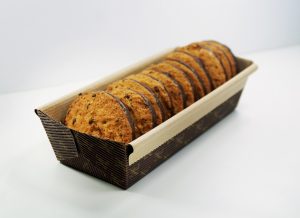
Freshness and Shelf Life
You want your packaged food to stay fresh and appealing for as long as possible. Oil-resistant coatings play a crucial role in achieving this goal. These coatings form a protective barrier that keeps oil and grease from seeping into the paper, which helps maintain the quality and flavor of your food. When you use packaging with these coatings, you reduce the risk of contamination and spoilage.
- Oil-resistant coatings repel oil and grease, preventing them from reaching your food.
- They minimize oil absorption, which helps preserve freshness and flavor.
- You experience less food spoilage and waste, leading to a longer shelf life for your products.
- The coatings improve hygiene by stopping leaks and keeping packaging clean.
- They prevent unsightly oil stains, making your food look more appetizing and professional.
By choosing oil-resistant packaging, you ensure that your food remains safe, fresh, and visually appealing from the moment it leaves the kitchen until it reaches the consumer.
Consumer Experience
You know that a positive consumer experience can set your brand apart. Oil-resistant coatings help you deliver that experience by keeping packaging clean and mess-free. When you eat on the go, you do not want oil or grease to leak through the packaging and stain your clothes or car. These coatings prevent such messes, making your meals more convenient and enjoyable.
Oil-resistant coatings also protect the integrity of your food. They keep oils and gases inside the packaging, which preserves the flavor, texture, and nutritional value of your food. At the same time, they shield your food from external threats like water vapor, oxygen, and light, which can cause spoilage. This combination of protection ensures that your food stays fresh, safe, and delicious, enhancing your satisfaction every time you open a package.
Brand and Sustainability
You want your brand to stand out for both quality and responsibility. Oil-resistant and sustainable coatings help you achieve this by combining performance with environmental stewardship.
- Brands use advanced barrier coatings that resist oil and grease while supporting recyclability and sustainability.
- Some coatings, such as those with bio-based content, use renewable raw materials to align with your sustainability goals.
- Companies collaborate to create recyclable packaging that uses less material, reducing waste and environmental impact.
- Thin, high-performance coatings support high fiber recovery during recycling, demonstrating your commitment to environmental responsibility.
- Industry experts recognize that these innovations help you meet evolving regulations and rising consumer expectations for sustainable packaging.
By adopting oil-resistant and sustainable coatings, you show your customers that you care about both product quality and the planet. This approach strengthens your brand image and builds trust with environmentally conscious consumers.
You now understand that oil-resistant coatings for paper packaging deliver essential protection, combining advanced barrier performance with food safety and sustainability. As you evaluate options, consider how modern biopolymer and PFAS-free coatings offer strong oil and water resistance, biodegradability, and non-toxic profiles. Industry innovation continues to improve these solutions, helping you meet both regulatory demands and environmental goals. Choose coatings that balance high functionality with a reduced ecological footprint for your packaging needs.
FAQ
What makes a coating oil-resistant?
You find oil-resistant coatings use special polymers or natural materials. These substances block oil and grease from passing through paper. Manufacturers design these coatings to fill tiny pores and create a strong barrier.
Are oil-resistant coatings safe for food contact?
You can trust most oil-resistant coatings for food packaging. Manufacturers use FDA-approved materials and follow strict safety standards. Always check for compliance with food contact regulations before choosing a product.
Can you recycle paper packaging with oil-resistant coatings?
You may recycle some coated paper packaging. Biopolymer and PFAS-free coatings support recycling and composting. Polyethylene coatings can make recycling harder. Always check local recycling guidelines for coated paper products.
Do oil-resistant coatings affect packaging appearance?
You see that most oil-resistant coatings remain clear and thin. They do not change the look or feel of packaging. Your food packaging stays professional and attractive while gaining extra protection.
How do you test oil resistance in packaging?
You use industry-standard tests like the Kit Test and Cobb Test. These methods measure how well coatings block oil and water. High kit ratings and low Cobb values show strong oil resistance.
Are there eco-friendly oil-resistant coatings available?
You find many sustainable options, including biopolymer, cellulose-based, and WCO-based coatings. These choices offer strong oil resistance and support compostability. You help protect the environment by selecting eco-friendly coatings.
Which foods benefit most from oil-resistant packaging?
You should use oil-resistant packaging for greasy foods like burgers, pastries, fried items, and deli meats. These coatings keep packaging clean and prevent leaks, ensuring food safety and freshness.



